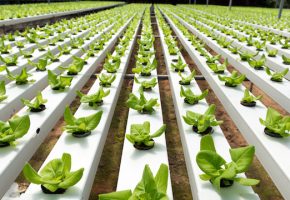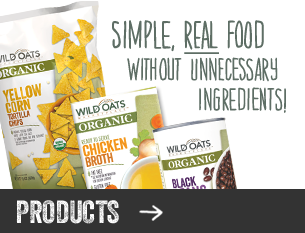Happy Mission Monday! Fall is officially here. Just as leaves and wardrobes are changing so does your go-to meals. Shifting gears from summer-time recipes to hearty fall classics can be fun with the right spices! We want to hear what your favorite spice is that you use this time of the year to make your meals go from good to amazing. Our sweet teeth are partial to ground cinnamon. We hope you take a moment to play along on Twitter or Facebook. Today’s challenge: Share with us your favorite spice for this time of year for a chance to win a spice prize pack. If you’re playing along on Facebook, simply comment in our Mission Monday post before 11:59 p.m. ET tonight to be entered to win! If you’d like to play along on Twitter, simply tweet us your answer with #wildoatsmission #sweeps by 11:59 p.m. ET today to be entered to win! Good luck! Full Sweepstakes rules and details can be found here Twitter and Facebook.
-
Recent Posts
Recent Comments
- Chelsea Vurciaga on Wild Oats Marketplace Organic Tomato Ketchup
- Chelsea Vurciaga on Wild Oats Marketplace Organic Elbow Macaroni
- Chelsea Vurciaga on Wild Oats Marketplace Organic Chicken Pot Pie Soup
- Chelsea Vurciaga on Wild Oats Marketplace Organic Instant Maple & Brown Sugar Oatmeal
- Chelsea Vurciaga on Eating Raw Or Undercooked Beans Is Dangerous
Archives
- November 2016
- October 2016
- September 2016
- August 2016
- July 2016
- June 2016
- May 2016
- April 2016
- March 2016
- February 2016
- January 2016
- December 2015
- November 2015
- October 2015
- September 2015
- August 2015
- July 2015
- June 2015
- May 2015
- April 2015
- March 2015
- February 2015
- January 2015
- December 2014
- November 2014
- October 2014
- September 2014
- August 2014
- July 2014
- June 2014
- May 2014
- April 2014
- March 2014
- February 2014
Categories
- affordable organics
- affordable organics movement
- ancient beauty secrets
- beauty secrets
- bees disappearing
- bees in danger
- best loyalty program
- best organic beauty
- best organic products
- best smoothie recipes
- better skin
- chive benefits
- chives
- cleansing
- cleansing diets
- delicious smoothie recipe
- difference between organic and non gmo
- extend summer
- fall allergies
- fight wrinkles
- fighting fall allergies naturally
- gmofacts
- gmos
- gmosandorganic
- honeybees disappearing
- Is non-gmo organic
- isorganicgmo
- join loyalty program
- loyalty program
- make summer last longer
- natural ways to fight fall allergies
- new quesadilla
- non gmo
- non gmo label as good as organic
- nutritional benefits of chives
- organic beauty products
- organic label better than non gmo
- organic trade association
- organic vs non gmo
- ota
- quesadilla
- quesadilla recipe
- record organic growth
- salmon
- savor summer
- smoothie
- smoothie recipe
- spring cleanse
- stayawayfromgmos
- swiss chard
- swiss chard benefits
- umani foods
- wild oat loyalty program
- wild oats
- wild oats sweeps
- win organic products
Meta


 Contact us
Contact us





